(Quick Giveaway Extravaganza Note: First, I’m not giving away a Sensoria system, back to normal posts :). Second, winners will be announced sometime today (Thursday), as I’m working through cleaning up any duplicates and picking the winners. Thanks for the awesome Extravaganza yesterday – and I’m looking forward to making a bunch of folks happy with new toys!)
Back a month or so ago during a trip to Seattle I got the chance to check out a new sensor system that launched last week on one of the crowdfunding platforms (Kickstarter, Indiegogo, etc…). While there are many new activity monitors and sensorish systems that launch every week, it just happened that these folks e-mailed me about two days before my trip to Seattle. So I carved 30 minutes after work one day and swung over to check them out and get some hands-on demo time.
To start, Sensoria is the name of the product, and it’s made by a company called Heapsylon. The product is different than any existing solutions on the market that I’m aware of in that it’s actually measuring activity at your feet – well, in particular, on your feet. Yes, on your socks.
The platform includes two core components. First, are the socks themselves. These socks have internal sensor strips within them – effectively e-textile sensors (electronic textiles). You can see this if you peer inside the socks:
Right now in the prototype phase the socks actually have little snaps, but that’ll change down the road as they near final production units.
The next piece of the puzzle is the transmitter pod. Now, I’ll warn you up front, everything you see here is the much bulkier prototype transmitter anklet (bracelet + ankle)– not the final unit they aim to ship with. To the left is the prototype, to the right is the 3D printed object of the final design.
To give context on the size, I found a banana nearby. Just a normal sized banana. Not one of those mini-ones, or some gigantic one. Just a run of the mill banana.
The anklet then communicates with your phone via Bluetooth Smart. Right now the unit gets 18 days of battery assuming 2 hours of running per day. The Sensoria is a bit different from regular activity trackers in that it’s aimed a bit more at the sports crowd, rather than the general ‘track me 24×7’ crowd. Being that they really want to get more complex data around position and force. But more on that in a moment.
Since I suspect there’s plenty of gadget geeks, here’s the 3D printer:
The design of the anklet appears to borrow inspiration from that of the Nike+ Fuelband, though, unlike the Fuelband, it doesn’t wrap all the way around your ankle, instead, just halfway.
Below are some sketches of the final design. You can see on the inside of the anklet where they’ll be utilizing strong magnets to hold it in place to the socks.
Though, as you can see they’ve experimented with other mechanisms as well, including clips. I’m interested to see how the final solution ends up working. Ultimately snaps tends to be one of the most secure ways you could attach it, but obviously that leaves a bit to be desired from a visual standpoint.
Now that you’ve got the anklet, you’ll attach it to the socks. Well, one sock that is.
The current plan calls for you to get a pair of socks – both with the internal sensor system, but only one anklet. This means that you’d only receive data from the connected sock, versus both socks. Speaking of the socks, they are washing machine friendly, but it sounds like the sensor strips inside may only last about 30 washes. For a runner, that’s really not a lot of washes. Right now each pair of socks (but not anklet) costs about $20US – though that’s the launch price, and typically we see increases later down the road.
Looking at the final anklet design, you can see it’s far less obtuse than the current prototype design:
So what do these magical socks get us? Turns out, quite a bit of information. They can gather stride length, cadence, foot positioning, pronation and even force.
What you see below is an internal app used to demonstrate the forces being measured within the socks. As the person changed from walking to running to increasing running cadence, all of that was measured and captured.
What’s interesting is that you don’t even need to have your foot on the ground for the sensors to detect position. Here they demonstrated holding the foot above the ground and rotating around, resulting in changes quite viewable on the graphs:
You can see below holding it still (flat section), and then moving it around resulting in a shift in the data. Pretty cool.
While in the office, I noticed a magazine open to an award that the Mio Alpha team had won. That’s the optical heart rate sensor system that I reviewed a number of months back – also starting out as a crowdfunding project.
It just happened that on the opposite page (the reason why the booklet was there), was the Heapsylon team for an award they won at the Innovation World Cup last year (along with the Mio Alpha folks).
But, an award doesn’t mean a successful product. It just means an ‘innovating’ idea.
So where do I think things stand with the project and potential success?
Well first is the obvious warning that it’s a crowdfunded project. Which means that I generally take timelines and promises with a solid grain of salt. Like, apple-fritter sized. I’ve yet to have a single Kickstarter or Indiegogo technology project come in on time, or with the promised/implied features. The good news on that front is that Heapsylon has a ‘delivery’ date of next spring – March 2014. Which, I think is appropriate based on what I saw.
From my standpoint I think the sensor/e-textile portion appeared to be pretty well grounded in that it will display data appropriate to the movements of the user. Moving upstream, the next piece is the transmitter anklet. It too was demonstrating the base functions, but in a much larger form factor. As you can see from the banana-photo, the Heapsylon has to get from the prisoner monitoring ankle looking platform down to something a fraction of the size. And, even more challenging, is re-engineering the clip system to ensure it stays put no matter the activity.
Next, we look at the analysis piece. They plan to have a phone app to help runners analyze the data (they’re focusing on runner initially, but they believe it can be carried through to many different sports from cycling to skiing). As of my visit, no such app was developed yet (though it was being worked on). In the world of app-development though, 9 months is pretty much an eternity – so that bodes well. Plus, there are a million folks who can be hired to write iPhone apps (but not a million folks to engineer electronic socks).
Finally, they’ll need to make the data ‘useful’. More specifically – actionable. Meaning, what do I do with the different positioning or impact aspects? How can I change my running? And do I want to change my running? To be clear, these are questions that the apps themselves have to be able to answer for users – not something someone can answer today in an interview. Turning physiology theory into practical iPhone applications can be exceedingly difficult.
That said, there’s something fascinating about the potential. For example, could this be extended to effectively create the power meter of running? Or, perhaps more directly – could it be extended to create sock-based power meters for cycling? Time will tell there. In the meantime, it’ll be interesting to see the project develop.
Thanks for reading, and as always – feel free to drop questions below!
(Updated note: I’m culling through and cleaning up comments that appear to be confused giveaway attempts – just to keep the post clean. Thanks!)
FOUND THIS POST USEFUL? SUPPORT THE SITE!
Hopefully, you found this post useful. The website is really a labor of love, so please consider becoming a DC RAINMAKER Supporter. This gets you an ad-free experience, and access to our (mostly) bi-monthly behind-the-scenes video series of “Shed Talkin’”.
Support DCRainMaker - Shop on Amazon
Otherwise, perhaps consider using the below link if shopping on Amazon. As an Amazon Associate, I earn from qualifying purchases. It doesn’t cost you anything extra, but your purchases help support this website a lot. It could simply be buying toilet paper, or this pizza oven we use and love.


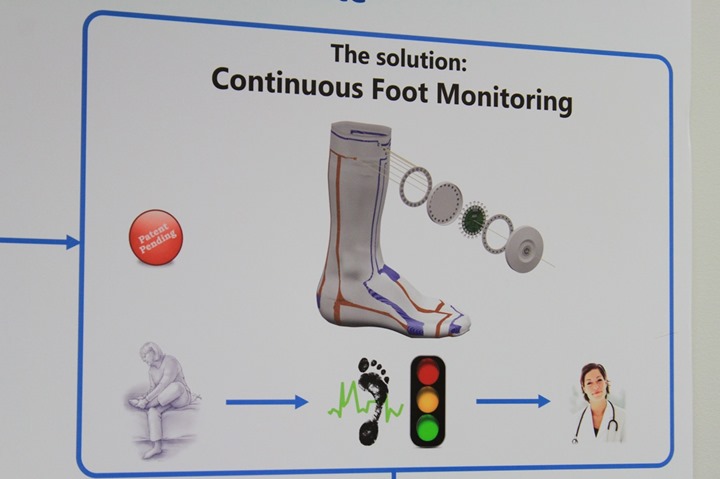

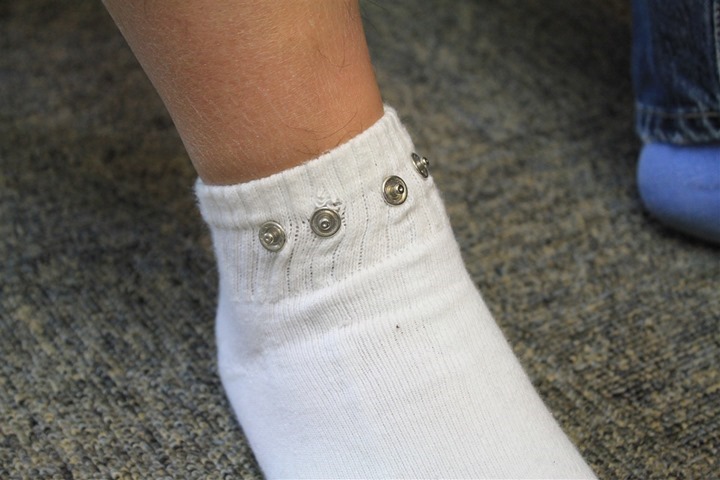
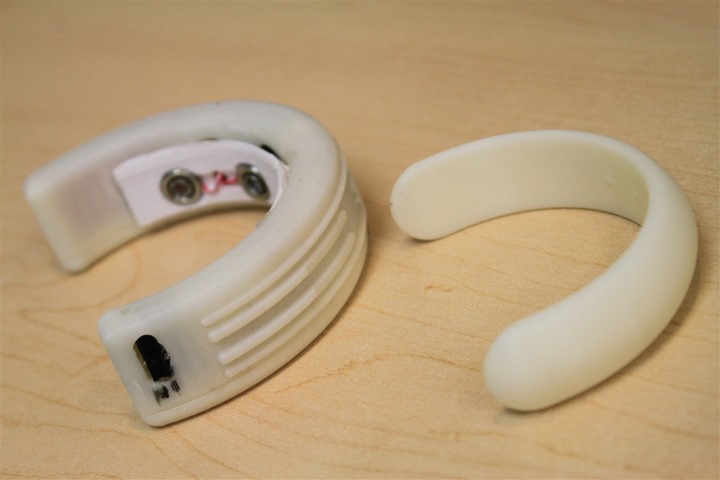
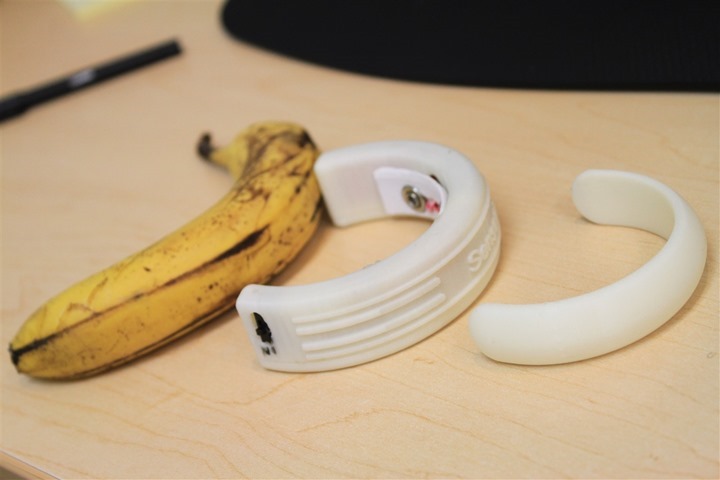
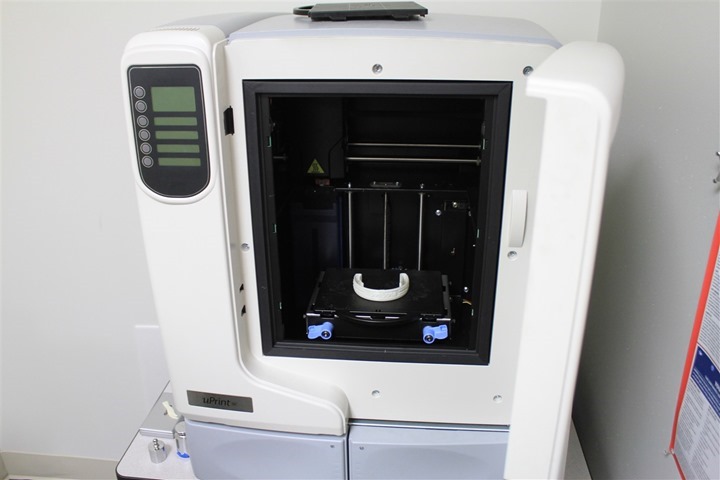
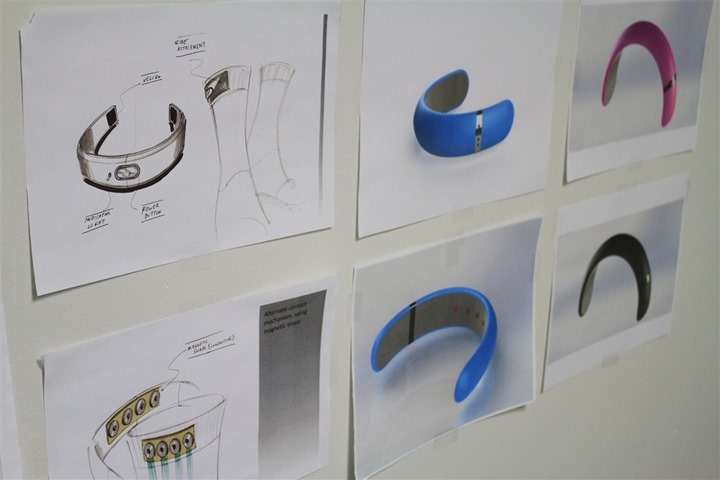
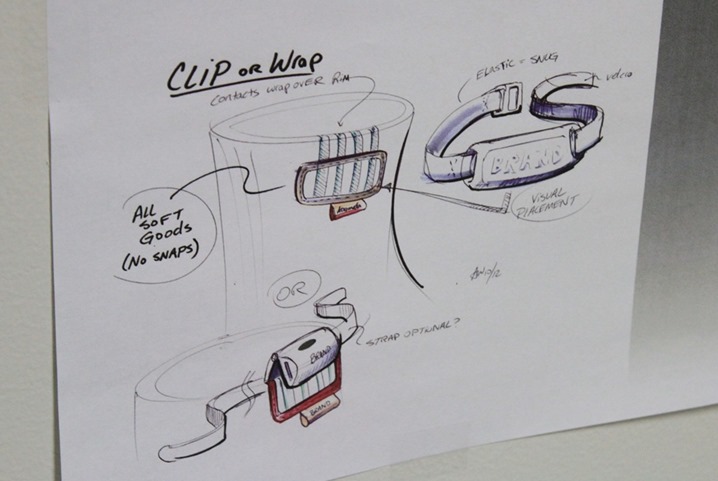
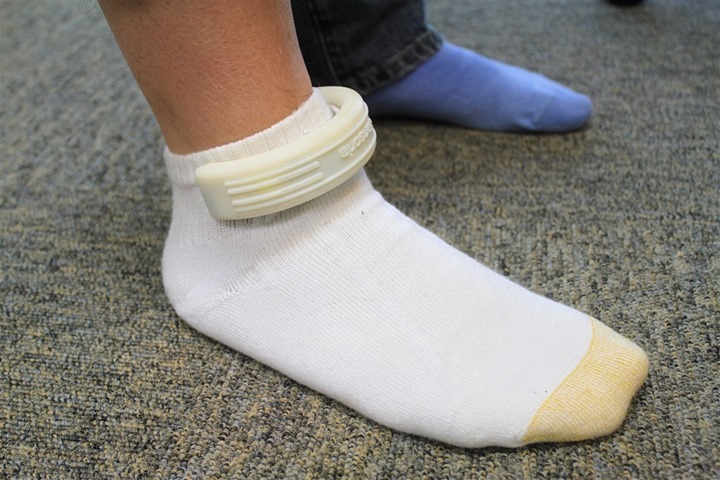

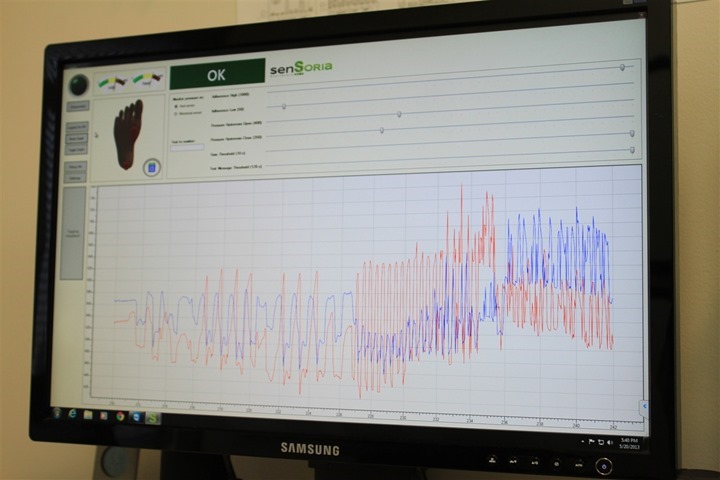

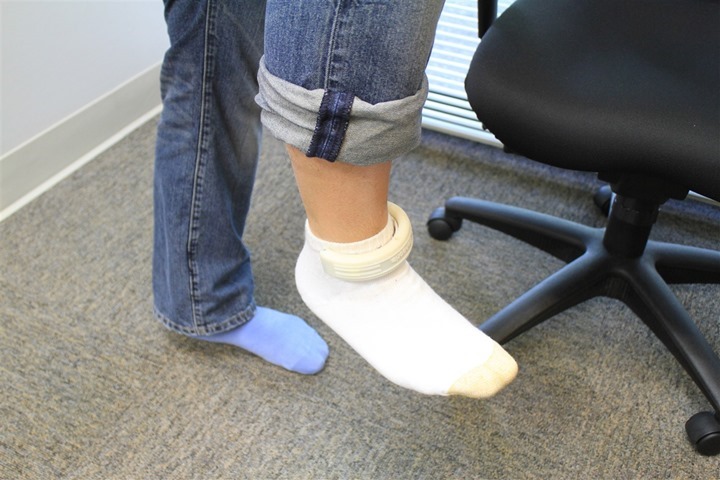
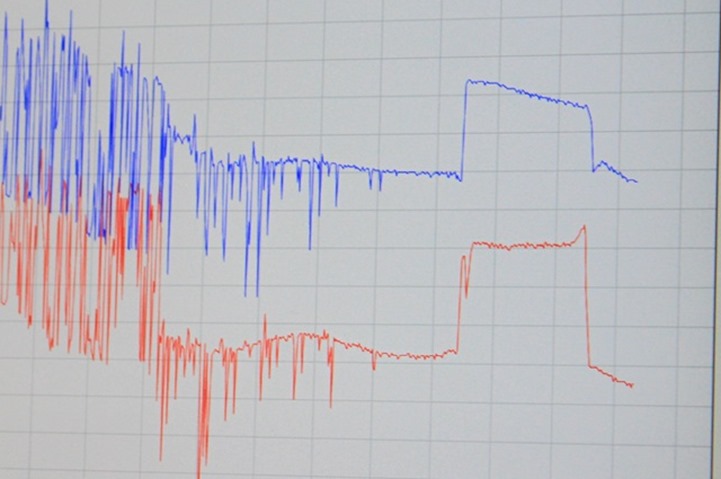
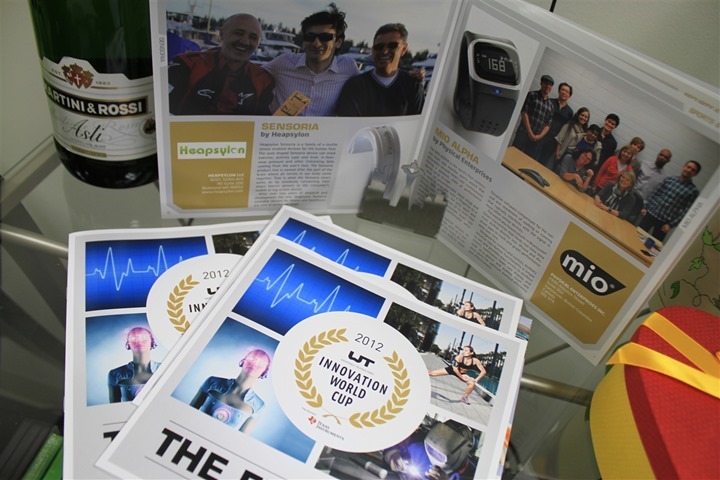
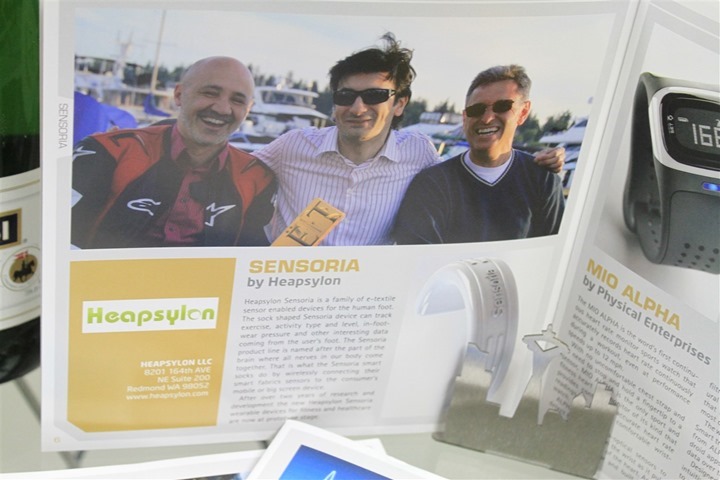

















A power meter for running would have dollar potential of a number with a lot of zeros after it.
tell me more.
Mario Esposito from Heapsylon.com
Why build it into the sock instead of the insole or the shoe itself?
My guess would be that a great may runners alternate shoes. I cycle through about 2-3 pairs per week just for training. Then I have a racing pair. Etc, etc. With a sock based system, I’m not restricted to just one pair of shoes.
For those races and runs where I go sockless, though? Yeah, an insole system might be nice, but I’d imagine it might lose some of the gyroscopic abilities that this seems to have.
And you always use the same pair of socks? Sure you’ll need an insole for each pair of shoes but that should cut down on the wear to the sensor from going through the washing machine.
What info are they gathering? Strain sensors? electrodes?
I guess with socks it’s easier to rock the kit with all your shoes. Shoes or insoles would definitely have their own advantages though. Like how they don’t get thrown in the washer after every run for example :-P
Sounds like an idea… powermeter as an insole for your bike shoes…
the idea of having insole power meter its something I would be interested in. after seeing this (link to kickstarter.com), and reading the comment in here, its posibe! Maybe charge a Di2 as well? who knows
No, you don’t always use the same pair of socks. Why would you only buy one pair of the socks? At only $20 per pair, I’m sure you could afford more than one pair. I mean, you’ve got multiple pairs of >$60 running shoes, right?
Hello Eli – Thanks for you comments on Sensoria.
Insoles are much more expensive than socks, you need one for each pair of shoes and if you have custom insoles (many do judging from #s that we have visibility on) the expense goes pretty hi.
You can wear the smart sock even during regular days with any kind of shoe.
We measure pressure (at finest degree) and force (in three levels)
There are many other scenarios where a garment is much more integrated with than an accessory/shoe. That is the thinking behind that and judging from the feedback and progress on the campaign it seems that most people are in line with the concept.
About the kind of sensor in the sock: there’s not one piece of electronics in the fabric.
Oooo, I want to win this! Wait. Dammit. Well, I’d still volunteer to be a beta tester, haha.
First high tech sock
for swimmers modification – jammers that can measure heartbeat and leg kick – another statistic data we could work on :D
love it :D
I think this product is interesting. I rarely listen to music when I run and instead pass the time focusing on my technique. I enjoy reading and learning about running biomechanics. If this product works well I could spend hours going over the info. On the other hand, I hate having to worry about my equipment and for that reason tend to steer away from crowdfunded products. I am really tempted by this one though. Hope it works out for them.
Will, thank you for your feedback! You can get it for free by joining our referral contest. You can find all the info on our Indiegogo page (you can click on one of the link in the article) and read the Update #2 in the “Updates” section. If you have any questions, feel free to leave a comment on that page or simply emailing us!
this sounds interesting. what if the socks gets worn out?
oldSAP, you can buy another pair socks! There is no reason to purchase another anklet! On our you can find exhaustive information! You can also leave a comment and we will answer you promptly!
Ray, it looks that it will have the same potential than a footpod, except from being stuck on a sock. Well, at least it will be more discreet and may go underwater. Do you see any use different than a footpod?
If I win this would they be interested in bringing the concept to Portugal, Europe?
it is already available for pre-order world wide. That includes Portugal.
Most of the current purchase are made from Europe. link to indiegogo.com
Intriguing – would like to check that out.
Is it April 1st?
Now that power meters for cyclists are almost household, this is the thing that runners have been missing. A good sensor device that provides usefull data.
The challenge is to have the available data followed by scientific results, papers, training programs, affordable pricing etc etc.
Do they offer a compression sock?
Very interesting. I got a bit worried when I saw their promo video you linked to in the Week in Review post. An app yelling at people to stop heel striking can lead to potentially dangerous changes in running pattern and high injury risk. For the “educated” runner, I suppose this could be a great tool. But with the app format, there is a risk that the data is over-simplified and have people making drastic changes for the wrong reason. For example, for most people a heel strike is rather a symptom than an actual problem. Keeping the same running style but forcing a mid- or forefoot landing may (and often does) lead to strain issues instead.
Though, for use together with a coach or for experienced runners, I think this could be a great tool. I would get one for sure :)
Looks a bit like the ankle tag that criminals have to wear here in the UK!
How funny that would be :)
could some data on your stride be really helpful to help a runner to improve his motion, posture.
it seems to me that there are so many parameters in runner posture that could be monitored to efficiently provide feedback to athlete.
swimming is probably where there is a real need for providing feedback to users. besides having a coach, friends, and a camera, it’s really hard to tell what you do right or wrong. and for sure as in any sport, your speed, pace, power or HR is not all you need to know …
when will we design and develop suits with a network of sensors ( accelerometers ? ) similar to the one used in animation/gaming/special effect industry. e.g. link to xsens.com
I think this can be really useful for people that need correctional insoles. I am one of those, and had some problems recently which could be easily solved when you know what movements your foot makes inside of your shoe.
Is it a cotton sock/will the final product be a cotton sock?
it is a hi-end running sock. Just cotton isn’t ideal for running as science proves that causes blisters. The combination of material is based off of dri-fit.
This is a real game-changer. I mean, how on Earth have I ever managed to be a runner for more than 30 years without receiving constant feedback on the subtlest nuances of my stride? And all along I thought running was simply a matter of left, right, repeat as necessary. Just like that ridiculous spork that got so much attention (including from DCR) at this year’s CSE: You mean to tell me I’ve been EATING wrong all my life? And that millions of years of evolution has brought us to the point where we need a utensil to tell us to chew our food, just as our mothers did?
Sorry, toys like these are meant for the same people who hire “life coaches.” Just lace up your shoes and go on a run — you’ll feel much better, especially if you stop obsessing over your heel strike angle and whether your pronation is 4 degrees or only 2.5.
Couldn’t have said it better myself…if you want to improve your foot strike join an athletics club and do some middle distance training and races.
I quickly browsed through the comments so I’m sorry if I missed someone covering this already, but
I think the main application here would be the speciality running store market. They charge a $50 fee for an “enhanced analysis or something.” and let you borrow the sock for the weekend. You go on a few runs, etc. You then come back with all of your data and they recommend a shoe for you.
You are going to get so much more information from this than the quick “run on the treadmill for 2 min” test. You might have a slight pronation while running for 2 min, but does it become severe after mile 6? I really don’t see average consumers using this product b/c for the most part, we don’t have the knowledge to turn the information into useful changes.
A shoe insert might be the product to make to address athletes that cycle through shoes. Only 30 washes and I be going through buying a lot of $20 socks!
I see lots of comments for an insole. I don’t think people realize that the concept of an insole is going to be more difficult to produce than a sock. Where would you put the sensor? And they would have to shrink the sensor to that of a microchip. Plus, the variety of sizes it would need to be is far more than a sock that can be s, m, l. Having an insole at the moment just isn’t realistic for a smaller company. Get Nike behind something like that and they probably have the means to do it. I think the sock idea is great. Might only go through 30 washes if you machine wash, but maybe hand washing would last longer? Has that been tested? For someone that love gadgets and gets horrible shin splints if I wear the wrong shoes, I would be all in for this. It would help me save money down the road to be sure what kind of shoes I would benefit from instead of spending $120 just to have them sit in a closet bc they hurt when I run. Must more useful than a spork.
Interesting…
From a financial point of view that would mean usage of the system would cost $0.67 per run (30 washes, $20 for pair of socks). This is rather expensive. To relate let’s assume a runner that runs 4 days a week 48 weeks a year. Sock metering would come to USD 128.64 annually, just as if someone buys a new 910XT every three years.
While some are certainly willing to spend the money, most won’t be.
The next issue is that you are tied to their socks. The right choice of sock is very individual, but highly important as it determines the blister or no blister for a runner. And again this tool is aimed for the ambitious runner who most likely is very picky abut socks.
Looking at Triathletes… well we race without socks and hence often train without socks…
Overall this would be interesting if it comes down to a running power meter, but anything short of that is just an expensive engineers toy (“We built because we can”) without little to no real life add-on value.
Tim F, I agree to disagree, while I see your point on financial topic I dont think its a major point on this product. As a road and off road triathlete as well as a coach I believe the running community and the triathlon community has been anticipating a product of this nature for some time coming. If we look at statistics of injury in running within the US alone its a staggering figure of around 70% and if I told one of my athletes or any athlete with injury that Sensoria could determine why its happening through a thorough analysis of foot strike and gate I dont think there would be hesitation on any level. While I know triathletes like you and I will occasionally run without socks why not focus on a few key run workouts in your program to use the socks (Long Run, Track workout Etc…) that would take down annual cost and monthly. I know that I would purchase this product purely for my long run workouts. With the availability of science in our industry why not use it to our benefits. Do you train with a power meter on the bike??? Why not have a device on the run that can determine muscular breakdown before cardio/respiratory breakdown. That would change training programs dramatically for each individual, my program included. Lets face it if you want to excel in this sport of endurance – naturally without the use of banned substance the next best thing is science within our equipment choices. If you have insight into what top professional athletes are doing in their programs you would jump at opportunities like Sensoria. This is a huge gain for the recreational and the competitive athletes. Some just choose to use it better than others.
Hi Tim thanks for your thoughtful comments. The numbers that you mention are not the final numbers. We have tested our latest prototype sock at the hottest wash and normal dry cycles 30 X. We believe that for e-textile or nanotech sensor material that’s an amazing achievement. However as you know some technical socks for running require to be washed more gently and without usage of a dryer. In this case durability of the current sock is extended quite substantially. We also believe that by when we go to market we will be able to produce a version of the sock that has extended durability.
Actually our goal is to become the GoreTex of e-textile sensors. We hope that in the future people will buy their favorite brand of socks “Powered by Sensoria”.
We also believe that we will be able to place our textile sensors on top of the foot (hard to do with insoles btw,,,) to make them useful to a triathlete like you in a biking scenario. Please watch the video on our page to see how http://www.sensoriafitness.com is different from activity trackers in the market. Hope this helps.
Okay, so I buy the 2x package and have one on each foot. Now I’d have real feedback
from both feet, not interpolated feedback (feetback) for the plain sock foot. Unless
there’s a way to strip out the interpolated data, this wouldn’t work. I’ve spent over
eight months so far transitioning from a hard heelstrike running form to a blessedly
smooth and comfortable forefoot/barefoot (with shoes) running form. Something like
this product would have been very helpful during this transition to let me clearly see
what my feet were actually doing real time. As far as running economy, I’m not too
sure there is much advantage here over heart rate and virtual partner function on a
GPS watch, for long distance runs.
I would agree with the “one on each foot” comment. I want to know if my right leg (which has a calf literally 2 larger in circumference) is doing more or less work than my left leg on each stride.
And to those calculating cost per run based on wash cycles, you don’t have to wear them EVERY run. It’s a diagnostic. Sometimes I run by HR, sometimes I run by feel….
I’m not seeing mention anywhere of provision to prevent crosstalk between
nearby anklets. So, one on each foot is probably a non starter. If that really
is the case then wearing a sensor sock on both feet and switching the anklet
back and forth and watching each foot separately would be the plan. Maybe
it would be possible to hack the sock for the left foot to get the forefoot info
to display correctly, but it would be a lot easier if you were able to toggle
which foot was wearing the sensor sock in software. Having algorithmic
voodoo supposedly showing you what the foot without a sensor is actually
doing positionally isn’t very useful for me. I can imagine once folks figure
that out, a lot of them will be switching their sensor sock back and forth
between feet to be able to see what’s really going on down there.
Where the data is recorded – on a phone or on the bracelet? In other words, would a phone be required during a run to collect data? What types of smartphones would this be compatible with?
Good question Stanislav. The anklet comes with storage so no a smartphone is not required… Unless you want real time information and alerts (on heel striking comparing you against your best self as an example). Even without smartphone you can still see the same information on a simplified Gait analysis on your dashboard after the run. We have created a FAQ document on our Indiegogo page. Also check out the Comments page for more!
How is the running distance measured?
it’s something like footpod?
Hi Amedeo! We use the the GPS of your smartphone!
which kind of data your sensor measure directly?
p.s.: I suppose someone of sensoria’s team is Italian (maybe from Naples like me (Esposito is a typical Neapolitan surname)), isn’t it? ;)
Salerno to be exact. That’s me.
The other Esposito is 100% American. We have a lot of diversity on the team though.
I’m not seeing mention anywhere of provision to prevent crosstalk between
nearby anklets. So, one on each foot is probably a non starter. If that really
is the case then wearing a sensor sock on both feet and switching the anklet
back and forth and watching each foot separately would be the plan. Maybe
it would be possible to hack the sock for the left foot to get the forefoot info
to display correctly, but it would be a lot easier if you were able to toggle
which foot was wearing the sensor sock in software. Having algorithmic
voodoo supposedly showing you what the foot without a sensor is actually
doing positionally isn’t very useful for me. I can imagine once folks figure
that out, a lot of them will be switching their sensor sock back and forth
between feet to be able to see what’s really going on down there.
Bluetooth/Bluetooth Smart requires pairing, thus crosstalk isn’t an issue since all communications have unique channels connecting to unique UID’s.
Thanks Ray!
Then an anklet on each leg is still a possibility. Cost is relatively cheap, about the
same as the Fitbit One each, with much more information, so buying multiple kits
wouldn’t be a problem. I just need exact foot feedback for each side because of the unsymmetrical nature of my body as a result of fractures, bone adhesions, and scar tissue. My goal is to be able see what influence changes to the footstrike
on one side have on the other side in real time.
Hi Ernie,
You can totally use two anklets with two instrumented socks at the same time. However your smartphone battery could be consumed faster!
That’s great!
Any plans for the software to be able to display both right foot and left foot on
the display true to wearing an anklet on each foot? You might sell a lot more
units to folks that want this level of functionality. If used as a diagnostic tool
the cost is pretty negligible for the user. Not really worried about extra battery
drain, a phone battery pack should fix that. And as far as my form going wonky
at the end of a long run or marathon, a gadget telling me about it won’t supply
me with the muscle mojo I need to fix it anyway.
I am interested, but I am done with crowd-funding. I will wait and see if the product actually delivers what is promised. If it does, I will probably buy it.
Making promises is always the easy part. Delivering a product that matches the promises is the hard part.
Considering that shoes are now manufactured in China at a cost of $10 a piece, I could see an entire shoe built for that type of monitoring. Sure, a small company can’t pull this off, but Nike could. Pressure sensors in the outsole, a gyroscope and a torsion sensor in the mid-layers, there is no end to the amount of data you could collect.
In the end, though, while cool and geeky, what do you do with the data? It can tell you how you run, but changing your form or correcting your gait is not something that anyone can do easily. In fact, several studies have shown that changing your running form after a certain age yields worse running economy.
Thanks for all the great feedback guys! You can get your hands on a Sensoria prototype real SOON (September) and you can contribute to finalize our features. For you we have added the Alpha Runner perk to our Indiegogo campaign. As soon as we have a hardware refresh and the final product you’ll be the FIRST to get them! Check it out: http://www.sensoriafitness.com
Just wanted to say that I bought an “Earliest Bird” and can’t wait!
As far as the durability goes; to be honest I’m not sure I’ll wear the socks every day. I’m not that concerned about data for an easy or fun run, but I could see where they’d be so good for a Tempo run or LSD, and for sure a race. For me as a casual runner that’s 2 days a week I wear them and 2 days I do not. I’m sure more serious folks have much more aggressive training :) Anyway I guess you have to ask, how much is the data worth to you?
Raymond, we appreciate your feedback and your support! We are at the 62% of our goal with 30 days to go!
The main thing that worries me about this device is it seems very iphone centric so seems sort of a gamble if android will be supported beyond the general gamble from it being a crowd funded project
This is just coming from the general history of crowd funded things over promising as outside of this post I know nothing of the people involved.
The indiegogo page says the device is BLE but that it only requires Android 4.2. Since 4.2 doesn’t support BLE generically it seems strange they wouldn’t mention which specific phones they plan to support. (as in, will they support the samsung BLE driver thats in the S3/S4?)
Hi Eli.
We are committed to create an Android app for 4.3 (with native BTLE support in the API stack). The page was mistakenly indicating 4.2 (fixed). It’s still possible to build a BTLE stack for phones like Samsung S3/S4, but we will do that depending on customer demand.
Thanks
Mac
Hi,
This sounds like a great concept, especially regarding injury prevention – I can go and have a gait analysis in my running shop, but I know that my gait after 20 or 30 miles won’t be the same as it is when I’m fresh hopping onto the treadmill. In order to synchronise the data with fatigue and ascent / descent, it would be important to be able to merge it together with my other fitness data (mostly gathered from Garmin devices). Could you please explain for data formats you will use? I understand that some of your metrics will be unique, but it would be great if you could make as many of them exportable to standard formats (e.g. fits), so that they can later be linked to other measurements of the same activities.
Thank you for the feedback and the great question! We are aware of how important it is for an athlete be able to merge different data coming from different sources. For this reason we will provide Data Connectors!!!
Moreover I’m happy announce a new stretch goal! If we hit $100K we will develop a Windows Phone App for Smartphones BTLE capable!
As I’ve seen this been covered on the Dutch Runner’s World website I was wondering if you (Ray) got a chance to test the newest version of this product. While it does have lots of possibilities, I could also see myself getting lost in useless information provided by the socks.
I have not.
Looks like we’ll have to wait till the end of August :-(
Maybe, as they havn’t said anything in a few months. Hear anything on your end?
Hi Eli,
Please check out this page:
link to indiegogo.com
In the next few days we will post a beefy update!
Cheers,
Paolo
Don’t see anything. Next week?